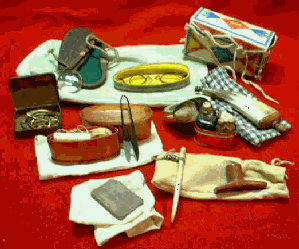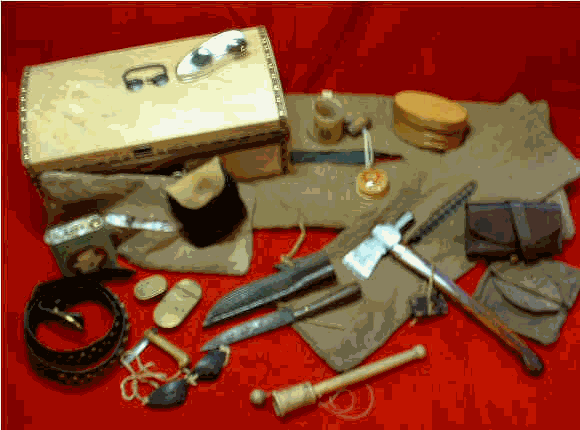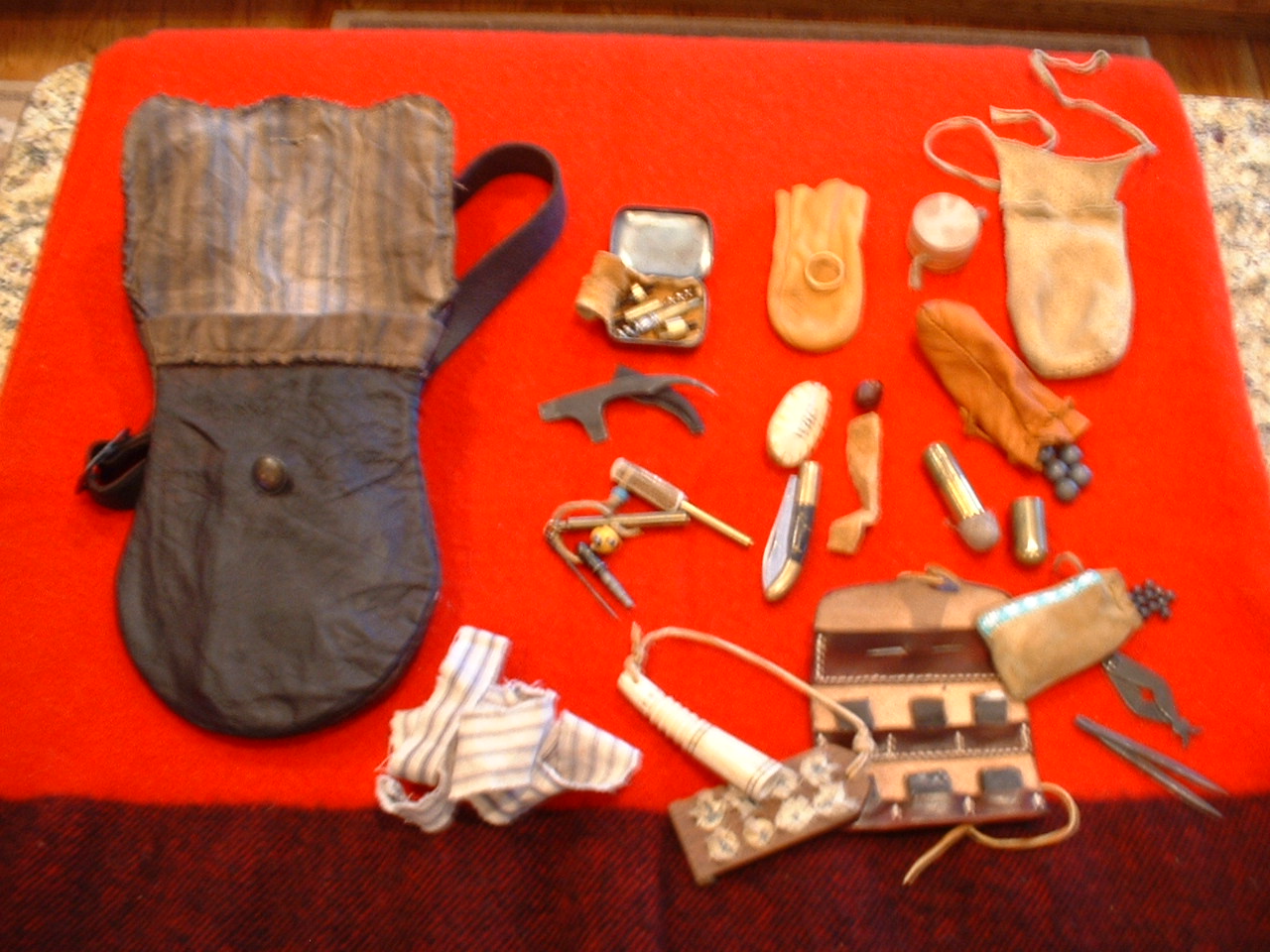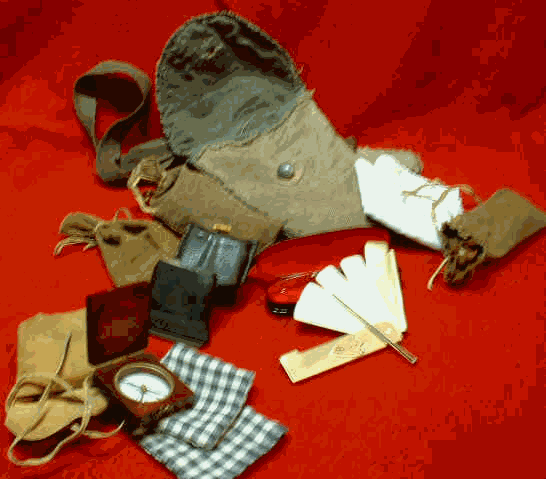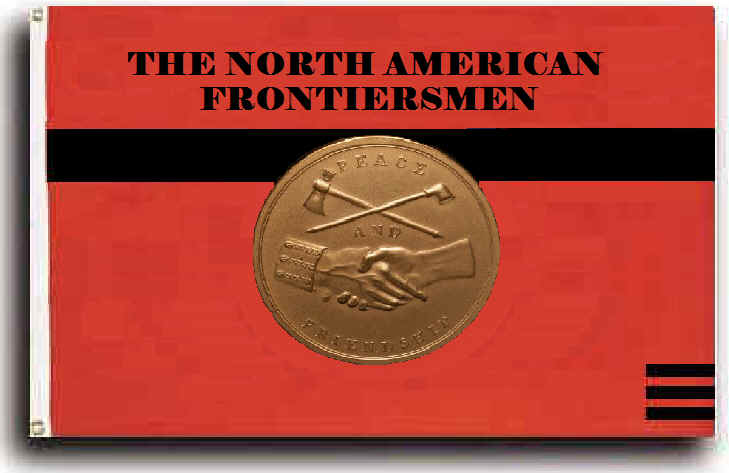|
BUCK CONNER Staff Writer |
Smoke Signals Nov./Dec. '10
|
We have had many nice comments about the first part of this article so lets finish the second part of "Plan Ahead & Prepare - Are You Ready?". Here we'll continue with the same thoughts on the subject but now looking at our primitive wares as an additional resource. Note the amounts of each grouping; this is something to consider when going through your camping equipment whether modern or primitive. Most don't realize their homeowner's insurance will probably cover any losses. Keep an accurate list that has current prices on your wares. I try and update about every six months. Pictures help adjusters make a closer value on your losses if this would ever happen.
In the Sep/Oct issue we looked what was the recommended list of supplies we should have on hand for this growing problem. At the end of "Plan Ahead & Prepare - Are You Ready?" I mentioned in the next issue we would look at our primitive camping equipage that would work in this situation. The camping equipage you have will do dual purpose, use it don't buy for the sake of getting something new.
Plan Ahead & Prepare - Are You Ready?
(cont from the last issue of Smoke Signals).
Family Preparedness
Here’s how I am approaching this “unwanted task” called such because we are spooled and don’t think such problems will ever reach our shores.
1.
List your strengths:
2. List your weakness:
|
Items
for your kit:
|
Field Test, how did your kit perform in the following areas:
Keep your 'kit' small and don't forget to add First-Aid items. This is your last step in being ready for the unknown. Have personal needs and base your wares on those needs and method of carry. |
This is our personal list we have on hand, yours will vary with family needs and number of members. We have a number of the items shown by FEMA - LDS - BSA Emergency Preparedness not all items apply to our personal needs. As maybe the same for you, you have to pick and choose what's right for you and your family.
|
ESSENTIALS FOR THE HOME
Home is where you will hold up if need be, those thinking of heading to the hills will be sitting in a large traffic jam and then running out of fuel. Plan on staying home for shelter, if your power or gas is shut off cook in the backyard, use the house for shelter. The same with your camping equipment use it at home to survive. Food: We have on hand in our storage room our emergency food supply that’s rotated with the weekly store bought food. This keeps our sources fresh and we don’t have to worry about bad canned foods, mixes, soups etc. There are freeze dried , dehydrated, MRES, type of foods that have an extremely long shelf life, and nutritious that are kept in the same area for accessibility. Our plan is for a minimum of one month of food per person.
Water: 30 gallons per person (2 gallons per person per day for 1 week). Remember that your water heater in the house is typically 50 gallons, and may be used. For additional water we use 30 gallon plastic drums made for this purpose. Using the formula above, we have 120 gallons in the plastic drums plus the 50 gallon water heater for the two of us. |
Cooking:
Barbecue : (2) 20 pound propane bottles with another 20 pound container of propane. A propane camp stove may also be used.Open fire cooking: I keep an antique large cooking kettle with a copper fire pan and grate in the backyard for decoration that can be readied for outdoor cooking in a manner of a few minutes. A supply of firewood stored near by in a save area of the yard provides the fuel source. Shelter: A 24’ enclosed trailer that has been rebuilt and is nicer than some campers inside is sitting along side the house in storage. It contains a small generator, fuel, camp equipment and tools if needed. Medical: First aid kit, medications available. We have taken a first aid class including CPR. This is the short list of what is shown above that’s suggested by groups mentioned. _________________________ ESSENTIALS FOR THE CAR / WORK Your house may not be safe to enter, or may catch fire after a disaster like an earthquake. Your car will be one of your most important resources after a disaster strikes. Keep it mechanically sound.
Replace your battery every 3-4 years. In an emergency, your car battery will need to run the radio and heater for extended periods.
|
SEE OUR LIST:
We have two vehicles, each has the same items.
All the items listed above will fit in a day pack for ease of carrying if needed inside work location or having to leave your vehicle going to or from your home |







